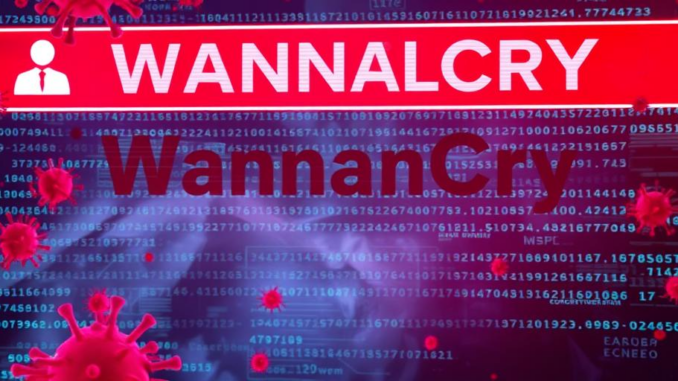
Summary
The WannaCry ransomware attack of 2017 spread rapidly across the globe, exploiting a vulnerability in Windows systems. It encrypted data and demanded ransom, causing widespread disruption and billions in damages. This article delves into the attack’s mechanics, impact, and the lessons learned.
Explore the data solution with built-in protection against ransomware TrueNAS.
Main Story
The WannaCry ransomware attack back in May 2017. What a mess, right? It’s a real gut punch that reminds us just how connected – and vulnerable – our digital lives are. Think about it, this one attack exploited a flaw in Microsoft Windows and, bam, it spread like wildfire, hitting over 200,000 computers across 150 countries. Imagine the chaos. All that data held hostage, all those Bitcoin demands.
But it wasn’t just some techy thing, honestly. It was a full-blown digital pandemic. Essential services were crippled, and it really highlighted the security holes we had worldwide. And let me tell you, the speed at which it spread was terrifying. It was fueled by something called the “EternalBlue” exploit. Turns out, the U.S. National Security Agency (NSA) developed it, and it targeted a vulnerability in Windows’ Server Message Block (SMB) protocol. You can’t make this stuff up.
Anyway, this exploit was then stolen and leaked by a group called the Shadow Brokers. Once out there, WannaCry used it to spread automatically across networks. No clicking on dodgy links needed! It just infected any vulnerable machine it could find on a compromised network. Basically it was a digital worm on steroids.
The impact? Huge. Corporations like FedEx, Honda, and Nissan got slammed. But, honestly, the worst hit was public services. The UK’s National Health Service (NHS) was nearly brought to its knees. Ambulances were diverted, surgeries postponed. It was a wake up call showing how vulnerable critical infrastructure is to these kind of attacks. I remember reading stories about doctors who couldn’t access patient records, it was chaos.
Financially, WannaCry cost billions. Ransom payments, lost productivity, recovery costs…it all adds up. While someone luckily found a “kill switch” – a domain name that stopped the malware when activated – a lot of systems were already locked up. If you didn’t have backups or didn’t pay up, well, you lost your data. Sucks, doesn’t it?
For me, personally, it underscored a few key points. Keeping your software updated is vital. That EternalBlue vulnerability was patched by Microsoft before the attack. But, lots of organizations didn’t bother patching, leaving themselves wide open. It was crazy. Plus, you need solid cybersecurity defenses – regular backups, incident response plans, the whole shebang.
Beyond the immediate technical stuff, WannaCry got cybersecurity into the public conversation, and rightfully so. People realized these attacks aren’t some abstract threat, they’re real and can have serious consequences. This led to more investment in security and a bigger focus on prevention. Which is good. Now, in the years since, WannaCry’s specific exploit has been dealt with. However, the core problems? Still there. So many organizations still struggle with patching promptly. Ransomware attacks remain a real threat, so, basically, we have to stay vigilant, we must. The lessons from WannaCry have been incredibly valuable, though. The awareness is up, security practices are better, and there’s more international cooperation. All positives, you’ve got to admit.
Ultimately, while the technical details matter, it’s the lessons about cybersecurity that are key. WannaCry exposed how fragile our world is, and how vital it is to be vigilant, prepared, and collaborative against cyber threats. As we keep relying on digital tech, WannaCry’s legacy reminds us that cybersecurity isn’t just an IT thing, it’s everyone’s responsibility.


So, the NSA basically wrote the WannaCry script? Did they at least get royalties when it went viral, or were they too busy patching their own Windows machines with duct tape and crossed fingers? Asking for a friend.
That’s a hilarious take! The irony of the NSA potentially scrambling to patch their own systems isn’t lost on me. It definitely highlights the universal challenge of staying ahead of vulnerabilities, even for those creating them. The incident underscores the importance of proactive security measures for everyone.
Editor: StorageTech.News
Thank you to our Sponsor Esdebe – https://esdebe.com
The NHS being crippled really highlights the critical nature of cybersecurity for essential services. Beyond patching, are there specific architectural changes healthcare organizations can implement to better isolate critical systems and minimize the blast radius of potential attacks?
That’s a great point about architectural changes in healthcare, thanks for raising it! Segmentation is really key; isolating critical systems through network zoning can definitely limit the impact of breaches. We should also focus on strong authentication and access control, as well as regular security audits. Do you have any examples of this in practice?
Editor: StorageTech.News
Thank you to our Sponsor Esdebe – https://esdebe.com
“Digital worm on steroids” is the understatement of the century! It’s like the IT version of that one friend who always manages to ruin the party for everyone. Makes you wonder if there should be a digital health code or something.
That’s a hilarious comparison! A ‘digital health code’ is a great way to put it. Maybe a mandatory software update schedule and security awareness training should be compulsory? It might prevent the digital party from being crashed!
Editor: StorageTech.News
Thank you to our Sponsor Esdebe – https://esdebe.com